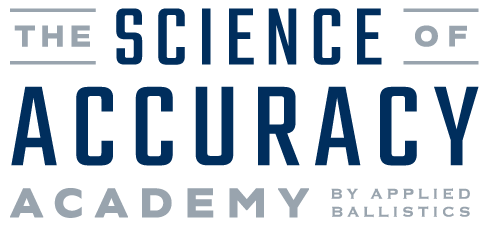#72 - Problems with Spinning Bullets
00:56:49 | This episode covers Modern Advancements Chapter 11. Modern projectiles have improved hit rates at distance over the past several decades using heavier, longer designs and monolithic projectiles. This creates challenges for stabilization, specifically, getting them up to speed without causing damage to projectile. Bryan and Mitch discuss challenges related to spinning projectiles to keep them stable, which is not always as simple as it may seem.



Torque – radius times tangential force – I think you were about to get there when the audio quit. I’ll go back and read the chapter.
Oh, I am an aeronautical engineer, although the ink on my diploma has probably faded over the last 6 or so decades. Wish I could contribute to your efforts.
Press on, guys. I really appreciate what you are doing.
Harold Miller
Couldn’t you just add more riflings? A 8 groove instead of 6 etc?
That is one of the possible solutions we discussed, we have some barrels on order to look at that option a bit more!
Found your discussion on rifling thickness and how to achieve that, interesting. We can make copper bullets in small lots to custom specs. It is not hard for us to increase the bullet diameter to fit a given grove diameter. We have bore rider and non-bore rider designs that we can apply changes to grove diameter to. That are not listed on the web site.
Additionally, changing the groove diameter by increasing the cutting of the groove depth will increase the weight of the bullet because of the larger groove diameter to get proper gas seal. That % increase in weight increases with bullet bearing surface length, do bore rider designs may be a better platform to test as the shear force necessary to initiate spin is less because of the increment increase in bullet weight is less if the actual sealing bearing surface is kept to a minimum.
We have built three rifles (the project started 2yrs ago) with large gain twist values: Two back to back .460’s and a 300WM. We have several rifles of a range of calibers being built. The 460’s were built, barrel wise, back to back, with a 15-12 gain and a 16-12gain- otherwise they were identical. The 300WM was 12-8. All shoot. The .460’s performed as expected with the change in gain. Both have documented 3 shot groups of 1.25″ at 600yds and one was used by a first time shooter to take a second place at a recent ELR event. They are notable in their quiet nature- ability to stay on target with a specific directional recoil. While our barrels are known for their recoil signatures, these rifles offer apparently more control.
It is our opinion a “quiet” barrel will send a quiet bullet. While acceleration values are huge and extremely small on a time scale we can’t, in our minds, avoid the conclusion a bullet is “flicked” as the barrel is in sinosoidal acceleration. Bows and arrows. We have seen several events- 3rd party- where bullets are “faster” then expected when shot from a stable barrel. We also have data that would initially indicate a higher BC. Before anyone goes crazy on that one- the bullet is not change. However, if the nose is not gyrating the drag induced is a result in the BC equation. Be down range at 5000yds and listen to bullet types and the nose gyration.
A recent ranked PRS shooter noted that our barrel was the only barrel he has tested to stabilize the big bullet he was wanting to shoot- and did so over a wide ladder test. Again an event of one is nearly worthless… but the trend continues.
It is also to spread the ignition event over a longer gentler period. Bolt set back.
Continuous pressure.
“Recoil” reduction which covers several avenues- avenues not discussed here.
Longer barrel life by reducing the initial heat spike.
While events of “one” are nearly worthless- the two .460’s responded exactly as expected. Less recoil, faster, less powder…
The 300WM is on a light version of our barrels- PRS guys ask us to make them heavier… it shoots to at least the same level as a standard 8 twist barrel, However, it is about to be chopped up for further testing of other concepts.
We have 6mm, 308 and 338 with large gains.
The other point we have learned as a trend: certain manufacturers consistently shoot brand A bullet but cannot shoot brand B bullet. Another manufacturer can shoot B but cannot shoot A. The trend is strong enough for us to talk to customers about the situation if the situation arises before they buy a barrel. This is twist rate to the same twist rate.